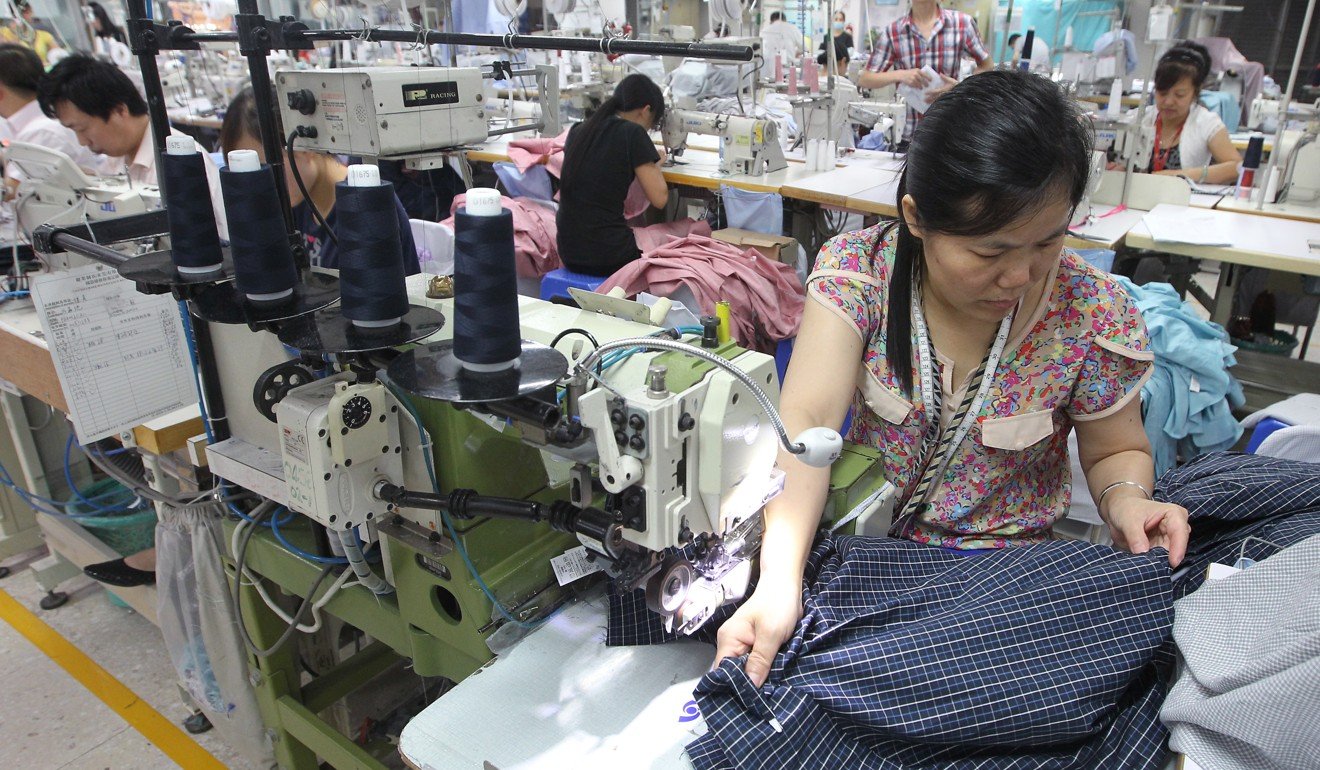Beijing’s retaliatory tariffs on US cotton will accelerate the offshoring of cotton spinning and lower-end textile and apparel manufacturing to South and Southeast Asia, and Chinese businesses are bracing for possible US tariffs on their finished goods if the trade war intensifies, industry executives have said.
But for now, at least, fallout from Sino-US hostilities has been limited because Chinese manufacturers have ways to get around the added duties, said Stanley Szeto, chairman of the Hong Kong Textile Council.
“So far the cotton tariff has had a very small impact on the Chinese textile industry because there are various ways to avoid it,” Szeto said, referring to the 25 per cent additional tariff on US products, including cotton, that took effect on July 6.

The Trump administration’s tentative 10 per cent tariff – pending a public hearing next month – on US$200 billion of Chinese merchandise has so far not touched the vast majority of China-made textiles and garments, except for fur and leather apparel and accessories like hats, gloves and handbags.
“The tit-for-tat trade war and possible coverage expansion of trade barriers will, however, see Chinese firms look more closely at relocating their manufacturing capacity across the supply chain to countries like Vietnam and Bangladesh,” he said.
“Basically if the same product quality and delivery reliability can be attained in these nations at a 10 per cent cost advantage, they would have moved.”
Szeto – chairman of 62-year-old Hong Kong-based fashion producer Lever Style, which works with designer brands such as Paul Smith and J Crew – said his firm made only about half its output in China, down from 100 per cent eight years ago.
Before the recently added 25 per cent duty, most US cotton sent to China had been exempt from import tariffs, which range from 1 to 40 per cent, depending on volume and prices.
Watch: Escalating trade war affects Trump merchandise
This so-called “processing trade” – in which cotton is imported by factories, some of which is located in “bonded supervision areas”, and used to make products that are exported from China – is exempt from tariffs.
According to the China Cotton Association, normal imports that did not fall under the processing trade, bonded supervision areas and other special customs categories – which are tariff-exempt provided no imported cotton is consumed in China – accounted for only 21 per cent of total imports last year.
This is despite the processing trades being subject to supervision and quotas set by local governments, which are reducing low-value-adding and pollution-prone manufacturing to drive the creation of more skilled jobs and improve the environment.
There is uncertainty about whether Chinese authorities will allow more processing trade quotas even as Beijing announced a substantial increase in cotton imports last month, said Bosco Law Ching-kit of Lawsgroup, a Hong Kong-based textile manufacturer with more than 20,000 workers in China, Bangladesh, Vietnam and Myanmar.
US trade war to plant seeds of change in China’s cotton industry
“In view of the Sino-US trade war, whether [more] processing trade is acceptable by the Chinese government is in doubt,” said Law, the firm’s chief executive.
Meanwhile, industry executives expect the tariffs to accelerate the relocation of Chinese cotton-spinning operations to Southeast Asia.
Law said that regardless of tariffs, supply-chain adjustments were an ongoing exercise for Chinese producers given rising costs.
“We are facing cost pressure all the time, not just because of tariffs but also labour and logistics costs,” he said. “Keeping operations efficient, sourcing materials with competitive pricing around the globe is the norm for all industrialists.”


